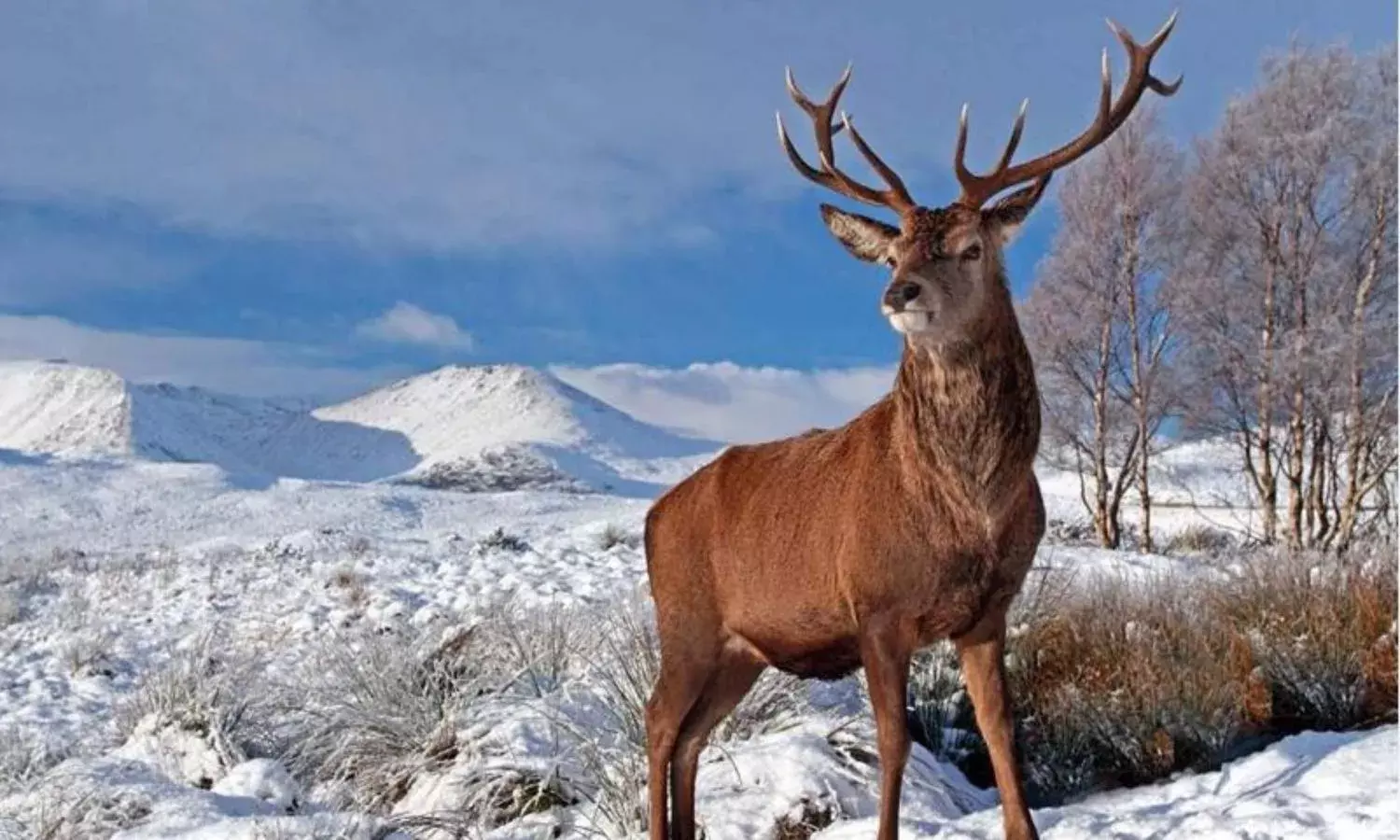The Struggle of Survival for Hangul in Kashmir
From 2000 in 1947 to 182 in 2017; the plight of the State animal is worsening
SRINAGAR: Known for its 11- to 16-point antlers, the State animal of Jammu & Kashmir -Hangul has been declared as the separate species. The world famous Hangul, now called as Kashmir’s Royal Stag is an endangered species found only in the valley.
Hangul, once distributed widely across Kashmir and neighboring Himachal Pradesh, is now virtually restricted to the 141 odd square kilometers of Dachigam National Park on the outskirts of Srinagar and in few pockets of central Kashmir’s Ganderbal district and North Kashmir. The International Union for Conservation of Nature (IUCN) has declared the Kashmiri Red Stag as a critically endangered species.
As per the Jammu & Kashmir Wildlife department, the population has dwindled from 2000 in 1947 to 186 in 2015. Poached for its meat, antlers and skin, Hangul’s population has been declining at an alarming rate. As per the census report 2017 of J&K government, the population of Kashmir Stag remains at 182 as of now.
In 2009, there was an uptick in the population reaching to 234 from 197 in 2007.
Besides the armed conflict, the Jammu and Kashmir State Environmental Information System (JKENVIS) has blamed a large scale biotic interferences in its habitats, in the form of excessive grazing, grass cutting, fuel and firewood collection, human trampling owing to men and vehicles of hundreds of paramilitary (CRPF) forces camped inside the park.
The Citizen talked to the Deputy Conservator of Forest (Wildlife), Central Division, Imtiyaz Ahmad Lone. He said, “There was a time when population was under 10. During the unrest in 1990s and later, there was a lot of disturbance in their habitat because of the obvious reasons. This affected the breeding process and the population definitely declined due to many behavioral activities but in the second half of 2009, it showed an improving trend”.
There was a massive and ambitious recovery plan prepared for an amount of rupees 21 crore formulated jointly by the Wildlife Department of J&K and the Wildlife Institute of India (WII) Dehradun in 2009.
Asking if the recovery plan helped improve the situation, Lone told The Citizen, “The funding of rupees 21 crore was promised by the Govt. of India for a period of 5 years. They provided us with less than one crore in the first year and afterwards no amount was provided as promised”. This plan later failed and didn’t work according to the objectives that were drafted for the accomplishment of this ambitious program.
“Apart from the state’s limited resources, they have been very liberal in providing whatever it takes. The state is very much concerned about the population of the Kashmir Stag. The population depends on the female fawn ratio which has just started improving.” he added.
The steps and the efforts for conserving Kashmir Stag has lately been a concern for the state. The officials say there has been an encouraging improvement in female-fawn ratio while the statistics state otherwise.





